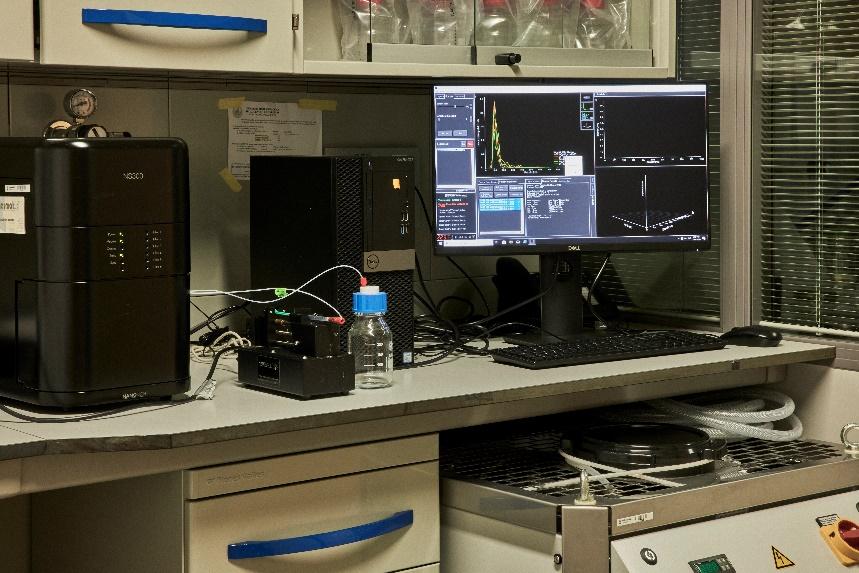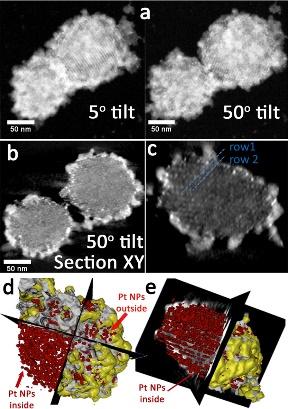U9-S03. Characterization of nanoparticles
Characterization of nanoparticles
The unit has access to different advanced characterization equipment including N2 adsorption (ASAP), porosimetry, several chromatography techniques (GC, HPLC, UPLC, GC-MS), Microwave Plasma-Atomic Emission Spectroscopy (MP-AES) for elemental analysis, UV-VIS spectroscopy, DSC, NTA, TPD/TPR and TGA. On the other hand, there is access to magnetic characterization by SQUID and VSM, Raman Spectroscopy (Alpha300R WITEC Raman confocal microscope), Infrared spectroscopy FTIR (Vertex 70 Bruker) and Fluorescence spectrometry (Perkin-Elmer, LS-45). Scanning Electron Microscopes (SEM) (including 3 dual-beam models); Transmission Electron Microscopes (TEM) (including two ultra-high resolution models with aberration corrector lens: TITAN 80-300 y TITAN CUBE 60-300). X-ray Diffractometers (specialized for powdered, low-angle and heating configurations), 2 X-ray Photoemission Spectrophotometers (XPS).
Customer benefits
The customer will be benefit from the expertise of the Unit´s members to carry out a complete characterization of nano and microstructured materials, ranging from polymeric, biological to inorganic compositions, including morphological, chemical, structural, optical, magnetic properties.
Target customer
Companies, material suppliers, pharma laboratories, research laboratories, conservation, medical laboratories.
Additional information
Selected Reference:
N. Miguel-Sancho, G. Martinez, V. Sebastian, A. Malumbres, I. Florea, R. Arenal, M. Carmen Ortega-Liebana, J.L. Hueso, J. Santamaria, Pumping Metallic Nanoparticles with Spatial Precision within Magnetic Mesoporous Platforms: 3D Characterization and Catalytic Application, Acs Applied Materials & Interfaces, 9 (2017) 41529-41536.










